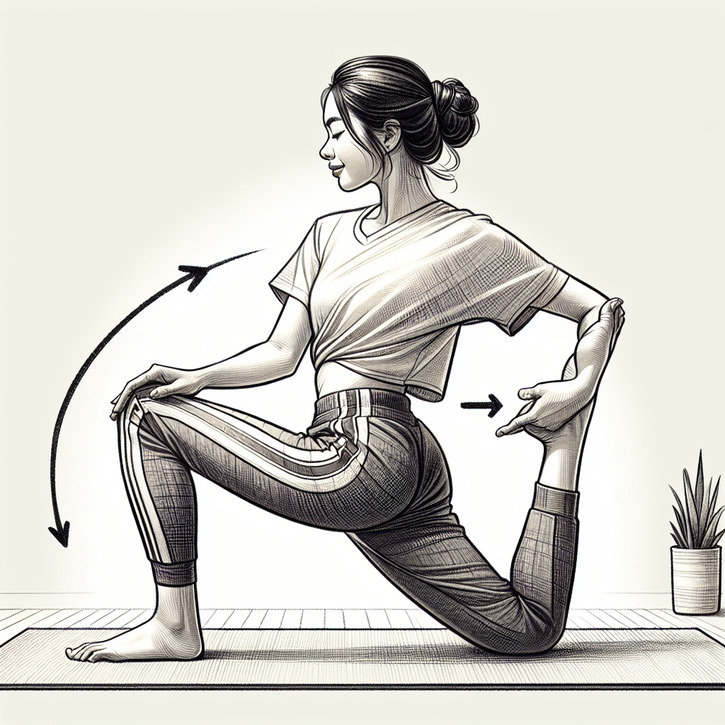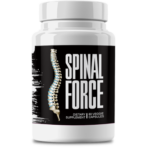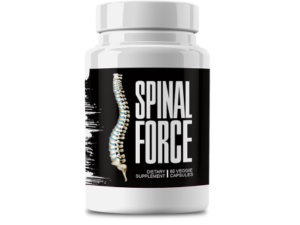This Village-Made Chinese Pain Reliever Eliminates Back And Joint Pain!
From Diagnosis to Recovery: A Step-by-Step Plan for Sciatica Hip Pain Relief

A Fresh Look at Sciatica Hip Pain Relief
We all know how sciatica hip pain can sneak up on you and throw your whole day off balance. But here's the good news: with the right game plan, relief is absolutely within reach. In this guide, we’re diving into a practical, step-by-step approach that kicks off with a solid diagnosis and paves the way to lasting recovery. We'll break things down—from basic definitions and essential ideas to why catching symptoms early really matters. Whether you've just been told what's going on or you've been wrestling with these symptoms for a while, the strategies here are designed to arm you with practical tips and smart insights. By blending solid medical know-how with holistic practices, our aim is to help you transform your everyday life.
Feeling overwhelmed by the avalanche of treatments and advice is only natural, but the key is first understanding what’s really behind your discomfort. Think of it as building a strong foundation of knowledge and taking bite-sized steps toward recovery. When you mix up traditional medical insights with some holistic tweaks, you can craft a plan that perfectly suits your own needs. So, let’s roll up our sleeves and unpack the core ideas behind sciatica hip pain relief, starting with why an early diagnosis truly is a game changer.
Getting to Know Sciatica Hip Pain Relief: The Basics and Beyond
At its core, sciatica hip pain relief is all about easing that nagging nerve pain kicked off by pressure or irritation of the sciatic nerve—the long, winding nerve that runs from your lower back through your hips and down your legs. When something compresses this nerve, you end up with pain and limited movement. The magic lies in finding the right mix of medical treatments, exercise routines, and lifestyle changes tailored just for you. Understanding both the physical and lifestyle factors that contribute to your pain is the secret sauce to effective relief.
Put simply, this kind of pain relief targets that pesky nerve pain which doesn’t just stick to your back, but travels down into your hips and legs, too. Knowing a bit about how the sciatic nerve works helps make sense of why targeted treatments are so important—and it gives you the confidence to play an active role in your own recovery. With inflammation reduction, strength building, and posture improvements, you can steadily shift away from pain and step back into a more vibrant, active life.
Why Early Diagnosis and Quick Action Matter
Let's face it: catching those sciatica symptoms early can be a total game changer. When you tackle the problem at its onset, you greatly lower the chance of it sticking around permanently. Early intervention doesn’t just protect your sciatic nerve—it also minimizes the risk of additional complications that might throw a wrench into other parts of your body. When you act fast, your treatment journey tends to be smoother and a lot less painful—both literally and figuratively. Recognizing the signs and sitting down with your doctor sooner rather than later can mean the difference between dragging out the struggle and bouncing back quickly.
Getting help right when the symptoms start means you’re not missing out on the best window for effective treatment. With a prompt diagnosis as your starting point, healthcare pros can set you up with a customized recovery plan that’s spot on. It’s all about taking those proactive steps so you can manage the pain, regain mobility, and keep living life to the fullest.
How Taking Control of Sciatica Hip Pain Can Change Your Life
Imagine greeting each morning full of energy and ready to take on the day, all without the weight of relentless pain. Sciatica hip pain relief isn’t just about dulling the pain—it’s about reclaiming your life. By confronting the issue head-on with early diagnosis, smart treatments, and lifestyle tweaks, you set the stage for real transformation. Whether your focus is on tailored exercise plans, nutrition tweaks, or even alternative therapies, every step brings you closer to a pain-free existence. Sure, the road to recovery might have its bumps, but with solid planning and the right support, you’re well on your way to a brighter, more active future.
Embracing a comprehensive approach means turning everyday activities from a struggle into something you genuinely enjoy again. When you’re not constantly battling pain, you can finally dive back into hobbies, social outings, and community events—boosting both your physical health and your spirit. By marrying sound medical advice with proven lifestyle changes, every little improvement in managing your pain adds up to a life that feels truly transformed. Now, let’s explore the critical first step: getting a clear diagnosis.
Diagnosis: The First Big Step Toward Relief
The journey to relieving sciatica hip pain starts with an accurate diagnosis. It’s essential to pinpoint exactly where the irritation or compression is happening. This usually involves a thorough check-up where your symptoms are carefully reviewed, your medical history is discussed, and a physical exam is conducted to zero in on which nerve is involved. A well-done diagnosis might reveal whether it’s a herniated disc, spinal stenosis, or another culprit entirely. The goal is to target the root cause so that every bit of treatment is working in the right direction.
When diagnosing issues tied to sciatica pain, every detail counts. Doctors might bring in imaging tools like MRIs or CT scans to get a bird’s-eye view of your spine and surrounding tissues. These tests help uncover any irregularities that could be driving your pain. A crisp, clear diagnosis not only eases your worries but also sets the stage for a treatment plan that’s tailored just for you.
Spotting the Signs: When It's Time to See a Doctor
It’s important to tune in to your body—persistent lower back pain that radiates down to your hip and leg, tingling sensations, or muscle weakness? Those are all red flags. Don’t brush them off; they might be your body’s way of saying it needs a check-up. Ignoring these signals could lead to more complicated issues down the line. Trust your gut when it tells you something’s not right.
When pain starts interfering with your everyday activities, it’s high time to get it checked out. A timely visit to your doctor can nip escalation in the bud, catching the condition early and making treatment a lot simpler. Remember, every little step you take to address symptoms early adds up to a smoother, more successful recovery journey.
Digging Into the Diagnostic Process: What to Expect
Once you decide to seek help, the diagnostic process kicks into gear with both physical exams and some pretty advanced imaging tests. Your doctor will check your reflexes, muscle strength, and nerve responses during the exam. Tools like X-rays, MRIs, or CT scans will then help paint a clear picture of your lumbar spine, highlighting any abnormalities. Sometimes, nerve conduction studies are thrown into the mix to see how well your nerves are firing on all cylinders. Together, these tests ensure that every potential source of your pain is considered.
This phase is a collaborative effort between you and your healthcare provider, piecing together all the information needed to tackle your specific situation. With the puzzle nearly complete, your doctor can design a treatment strategy that hits the nail on the head. A solid diagnosis builds the foundation for a recovery plan you can really trust.
When to Call in the Specialists
Sometimes, a general practitioner’s advice is a great starting point, but if your pain sticks around or initial treatments don’t do the trick, it might be time to bring in a specialist. Musculoskeletal or neurological experts can dig deeper into your condition and tailor their approach to your unique needs. Their advanced knowledge means they can diagnose tricky cases and suggest more refined treatment options—making sure every inch of your pain is carefully evaluated.
A specialist might catch details that a general check-up misses, which is crucial when forming a treatment plan that seamlessly blends conventional and holistic strategies. With their finger on the pulse of the latest research and methods, these pros become invaluable allies on your path to recovery. When dealing with something as intricate as sciatica hip pain, specialized advice isn’t just a bonus—it’s a must.
Crafting a Treatment Plan That’s Just Right for You
Once you have a clear diagnosis, it’s time to build a treatment plan that fits you like a glove. This isn’t a one-size-fits-all situation—your recovery should be as unique as you are. A well-rounded plan balances short-term relief with long-term strategies, blending everything from medications and physical therapy to alternative treatments. By setting practical goals and mapping out a clear path forward, you gain the confidence to steer your own recovery.
No two journeys are the same, so your plan should mirror your specific symptoms, daily routines, and how you react to different treatments. Working hand in hand with your healthcare provider, you can tweak the plan to keep it flexible as your needs evolve. Whether that involves low-impact exercise, nutritional tweaks, or regular check-ups, every detail contributes to a stronger, more resilient path toward lasting relief.
Setting Achievable Milestones on Your Recovery Journey
One of the keys to effective sciatica hip pain relief is setting realistic, bite-sized goals. Since recovery is more of a marathon than a sprint, those small milestones—like easing pain, boosting mobility, or getting through daily tasks without discomfort—add up to big wins. These goals help you see progress and keep you motivated along the way.
Remember, the journey isn’t perfectly straight—there will be highs and lows. Celebrating even minor improvements can be a huge morale booster, keeping you moving forward. With clear, manageable targets, you’ll be better equipped to track your progress and adjust your plan if needed, steadily paving your way to a pain-free life.
Mixing Medical Know-How with a Holistic Touch
These days, achieving sciatica hip pain relief often means pairing tried-and-true medical treatments with holistic practices. While medications and targeted physical therapies tackle the immediate pain and inflammation, approaches like yoga, acupuncture, and tailored nutrition can offer that extra boost to your overall well-being. The idea is to create a balanced regimen that works on multiple fronts, nurturing your body’s natural healing capabilities.
Merging conventional treatments with holistic ones gives you a broader toolkit to address the pain. It’s about more than just quick fixes—it’s about fostering a healthier lifestyle overall. By embracing this blended approach, you’re well on your way to not just managing your symptoms, but truly transforming your overall health.
Fine-Tuning Your Plan: Meds, Therapy, and More
Your journey to sciatica hip pain relief is deeply personal, so tailoring the treatment plan to fit your life is key. For some folks, adjusting medications—ranging from NSAIDs to muscle relaxants—is the ticket to short-term relief, while others may find that physical therapy takes center stage. Often, a mix of treatments, including alternative therapies like acupuncture, can deliver the best results. The idea is to experiment (under professional guidance, of course) until you find the blend that suits you.
Regularly tweaking your approach as your condition evolves is just as important as the initial plan. As your body responds to treatments, staying flexible and keeping the dialogue open with your healthcare team ensures that your recovery remains on track. A dynamic, personalized strategy is the cornerstone of long-term success in managing your pain.
Working with Physical Therapy and Specific Exercises
Often, physical therapy and well-guided exercises become the bread and butter of sciatica hip pain relief. Structured movements can ease nerve pressure, cut down on inflammation, and strengthen those muscles that offer vital support to your spine and hips. A good exercise program might blend stretching with strengthening moves, all tailored by a knowledgeable therapist who understands the ins and outs of sciatica.
Think of your physical therapy sessions as both a workout and a conversation with your body. Sure, some sessions might push your endurance, but every little breakthrough builds the confidence needed to keep progressing. Listening to your body and gradually increasing the intensity of your exercises helps mitigate any potential setbacks while paving the way to more fluid, pain-free movement.
Focusing on Stretching and Strengthening
When tackling sciatica, a mix of targeted exercises is essential. Stretching helps ease tight muscles, especially in the lower back and hips, reducing the strain on your sciatic nerve. At the same time, strengthening exercises build up your core and stabilize the afflicted areas. A typical routine might swap between gentle stretches and focused resistance work, gradually stepping up the challenge as you get stronger and more flexible.
Staying consistent with these exercises is key. Over time, regular practice can become second nature, integrating smoothly into your day-to-day life and offering persistent relief. Always follow the advice of your healthcare provider or physical therapist to ensure you're getting the most benefit while minimizing the risk of further injury.
Low-Impact Activities and Posture: The Daily Boost
Incorporating low-impact activities into your daily routine is a smart move for long-term relief. Whether it’s taking a leisurely swim, hopping on a bike, or simply enjoying a calm walk, these activities help strengthen muscles without putting undue stress on your back. And let’s not forget about posture—small tweaks in your sitting, standing, and lifting habits can work wonders in lightening the load on your hips and lower back.
The goal isn’t to overdo it; it’s about finding the right balance that keeps your body moving smoothly and steadily. Each gentle activity not only supports recovery but also reinforces proper posture, setting the stage for a healthier, pain-free future.
Keeping the Flame Alive: Tips for Staying Motivated
Staying motivated throughout your recovery can sometimes feel like an uphill battle, but each step forward, no matter how small, is a win. Acknowledge and celebrate every little victory—whether it’s getting through a day with less pain or adding a few more minutes to your exercise routine. This positive feedback loop can really keep your spirits high, even on the tougher days.
Remember, recovery is a process filled with ups and downs. Staying engaged with your plan, leaning on your support network, and maintaining a flexible attitude are all part of the journey. Your commitment to a pain-free, active lifestyle is what truly makes the difference. After all, every step taken toward managing your symptoms is a triumph in itself.








